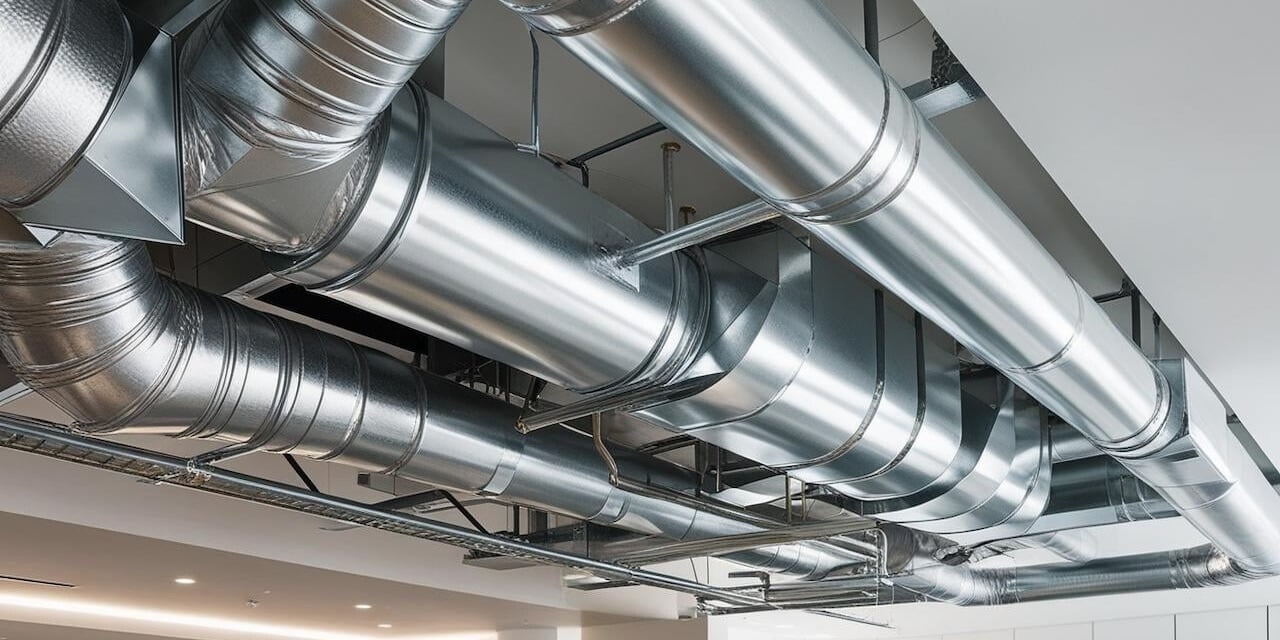Newsletter
A system is a defined group of things working together as part of an interconnecting whole. When it comes to improving air quality in buildings, you need systems rather than a single product or tool.
IAQ sensors are highly versatile devices, but if you’re not incorporating them as parts of a larger monitoring system, they’re only going to deliver a fraction of their value. In this article, we’ll talk about four essential parts of the best IAQ monitoring systems.
1. Sensors
Every IAQ monitoring system begins with sensors. Without these, no monitoring can take place. Sensors are the devices that assess your air for VOCs, particulate matter, and other unwanted pollutants. However, not all sensors are created equal. Let’s take a closer look at the design features and accuracy levels that set them apart.
Sensor Calibration - Look for Modular Design to Avoid Costs and Disruption
All measuring instruments require calibration. This process tests accuracy by comparing a device’s readings to known reference values, after which it is adjusted accordingly. IAQ sensors usually need to be calibrated once a year, or their readings can become inaccurate. For instance, particulate levels are measured with an optic sensor that sends a beam through the air and records the light that reflects off of airborne particles. However, the sensor loses accuracy as it collects dust that blocks this light.
Some sensor manufacturers demand that you send the whole device back to them for recalibration, which can take weeks and result in costly invoices for repairs and shipping. You can avoid these pitfalls by choosing monitors with replaceable, modular sensors, for which recalibration only takes seconds. You simply remove the old sensor and insert the new one, saving a lot of time and money.
To learn more, read our previous article on sensor calibration.
Resolution, Parameters and Building Standard Verification
IAQ sensors are like people: some are more perceptive than others. Inexpensive commercial models and those designed for home use will generally be less accurate and informative than higher-grade commercial sensors. Here are a few important qualities to look out for:
- Resolution: The higher the resolution on your device, the more accurate its readings will be. IAQ sensor resolution is described in “ppm”, or “parts per million” for most parameters. A resolution of 5 ppm is higher, or finer, than one of 30 ppm. Building standards have issued their own advice about what resolutions are acceptable. WELL v2, for example, requires that sensors measure carbon dioxide to 25 ppm or finer, while RESET Air requires 5 ppm.
- Parameters: Some monitors contain several sensors, allowing you to detect a wide range of airborne pollutants, while others will only give you information on one or two. Choosing a monitor that measures many parameters will give you a more complete understanding of your air quality, and satisfy the demands of building standards. For example, RESET Air requires that you measure TVOC, particulate matter, and carbon dioxide.
To learn more, check out our previous article: Accuracy, Precision, & Resolution - What Do They Mean for IAQ Sensors?
2. Online Portal / Cloud Dashboard
If a tree falls in the forest, but nobody is around, does it make a sound? A more important question might be “If an IAQ sensor measures the air quality of a room, but nobody can see the data, does it make a difference?”
An online portal is a web-based platform where managers and administrators can observe IAQ data remotely and put it to use in creative ways. Not all IAQ monitors are equipped with this feature, so you would be wise to check that your monitor connects to ethernet or Wifi and is supported by an online platform. The most effective online portals will allow you to:
- Display pollutant levels and trends across multiple devices in one location, and compare these levels. You can then identify and remedy problem areas like sources of pollutants, spikes, and overpopulated spaces.
- Create and export performance reports in formats acceptable to building standards. You should be able to choose the parameters, timeframes, and devices most important for your report. This will allow you to avoid some site inspections when applying for standards like WELL v2 and RESET Air.
- Show when sensors need replacement: Running a business makes a lot of demands on attention. Look for monitors supported by a platform that automatically reminds you when your sensors must be recalibrated, and that’s one less thing to worry about.
3. Sharing Information: Built-In Displays and Wall-Mounted Screens
A huge advantage of IAQ monitoring is that it reassures your employees that they are breathing clean air, and that you’re looking after their health and well-being. This can have a direct result on productivity.
For example, a recent office study showed that every 10% improvement in perceived air quality resulted in a further 1.5% increase in productivity. The best systems will feature in-office screens that let employees and other occupants see for themselves how clean the air is in real-time.
This strategy doesn’t just put minds at ease and boost performance, but can also allow for quick intervention in the case of IAQ-related quandaries, such as TVOC spikes. Here are a couple of strategies for sharing this data with your employees.
- Built-in displays feature on some IAQ monitors, such as the Kaiterra Sensedge. These screens allow you to make visible the parameters you feel are most important to share with occupants. All you need to do is mount the device on a centrally located wall and watch as your employees are put at ease.
- Wall-mounted screens can be used when your IAQ monitor doesn’t have a built-in screen, or if you want to display your data in multiple locations. This option is especially useful in larger workspaces, where a small screen might be less visible. As with all the other features discussed, you’ll want to check that your chosen device has screen-sharing capabilities before purchase.
4. Building Automation Systems (BAS) And The Internet Of Things (IoT)
The Internet of Things (IoT) refers to data exchange between different devices that are connected to the Internet. Most commercial IAQ monitors are IoT-enabled, and with good reason. This sort of network allows you to send information from your IAQ monitors directly to your HVAC system through what’s known as a Building Automation System (BAS).
Using BAS, monitors can automatically trigger heating, cooling, or power-downs by measuring carbon dioxide levels that show whether a room is in use. This method can save you huge amounts of time and money, as power is no longer used to heat, cool or ventilate empty rooms. Here are a few key considerations for developing your BAS:
- Native Integration: Make sure to choose monitors that integrate natively with your HVAC system. Check whether your monitor is listed as ‘out of the box’ compatible with your Building Management System (BMS), as forging a connection between incompatible devices can be very expensive.
- Building Communication Protocols: Protocols are sets of rules that establish how systems communicate, like the grammar and syntax that structures a language. Building communication protocols are the means by which automated processes in a building communicate with sensors. You can streamline and future-proof your BAS project by making sure that your sensors support the most commonly used building communication protocols, such as BACnet and Modbus.
- Application Programming Interfaces (API): If protocols are like languages, an API is a skilled translator. This kind of software interface allows further communication between devices by simplifying how new apps are integrated into existing systems. Ensuring that your monitors contain an open API at the core will allow developers to create programs for your BAS with ease.
Time To Get Creative
The most effective IAQ monitoring systems don’t just collect data about air quality, they put it to use.
Sensors provide a foundation for these operations. Make sure that yours can be easily calibrated, have a good resolution, and measure a range of parameters. Your online portal is where you can access and manage the data that your sensors collect. The best portals will allow you to compare several devices in real-time, observe historical trends, and export reports for building standard certification. Use a monitor with a built-in display or wall-mounted screen in a central location to share real-time parameters with your employees, showing them that you are looking after their health and well-being. Lastly, monitors can be integrated with BAS to save huge amounts of energy.
These are only a few of the exciting ways your IAQ monitors can be put to use, and new applications are constantly being discovered. How will you use yours?
Learn more about the basics of IAQ monitoring and industry best practices in our free eBook, Indoor Air Quality 101:






.png?width=200&height=148&name=Menu%20C%20(2).png)

.png?width=307&height=228&name=Menu%20-%20D%20(1).png)
.png)





